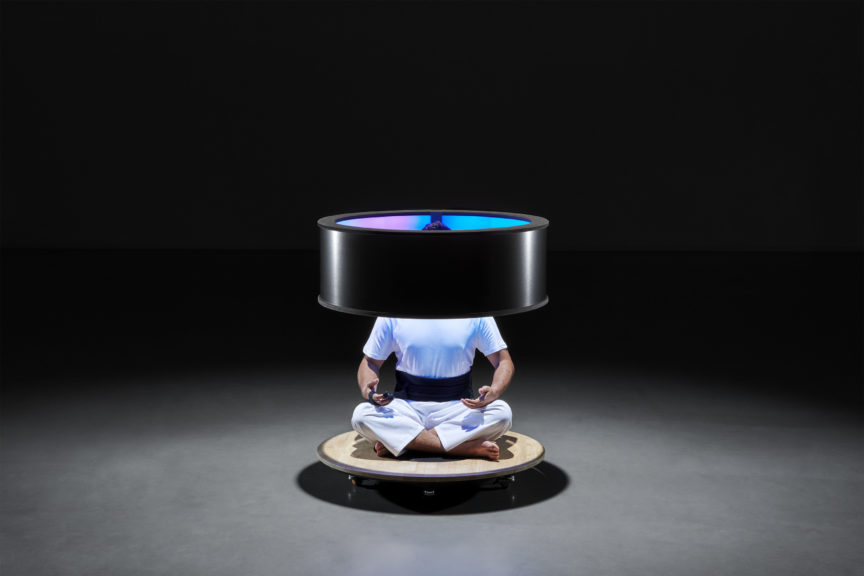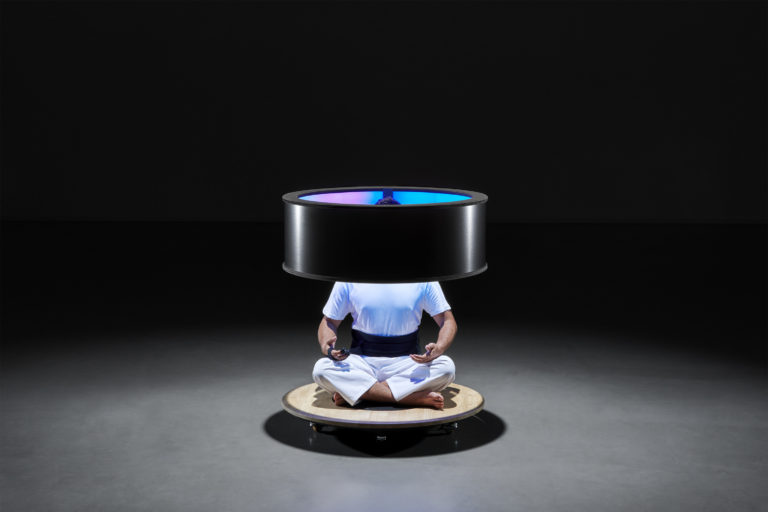Our paper at SIGGRAPH 2021
Each year, more than 18,000 people attend, but only 8 major artistic contributions of academic value are selected. Designed by EPFL+ECAL Lab, the Ming Shan Digital Experience project has been favoured by the experts. It confronts technology, science and contemporary design with a practice and a philosophy that are thousands of years old. This set-up, which is now operational in Switzerland, has gained worldwide recognition.
The SIGGRAPH international conference dedicated to computer graphics and interactive technology is the global meeting place for experts in digital science, the computer industry, Hollywood production and the digital arts. With the weight and rigor of academic tradition, contributions are subject to very strict rules of double-blind expertise by specialists. They thus serve as scientific references. The work carried out by the EPFL+ECAL Lab, the EPFL design research centre, in partnership with the new lay Ming Shan Taoist Centre in Bullet (VD), Switzerland, is one of the major contributions of this year 2021.
The ambition of the Ming Shan Digital Experience project was to imagine an immersive device contributing to the practice of meditation. Two years of research have made it possible to develop an astonishing installation: each participant is seated in a circle of light, whose colour, rhythm and intensity change according to individual physiological parameters. This immersive light aims to provide support to novices, and to offer advanced practitioners new perspectives.
Experimental developments have made it possible to go even further: each device emits sounds on the basis of body signals, acting like a musical instrument. Participants thus benefit not only from individual support through light, but also from collective perception through sound. Finally, the system also acts on the surrounding space by projecting visual flows on the walls of the temple, bathing the entire space in a common flow. Light, sound, visuals and body signals operate in real time.
The impact of this system has been studied, with the involvement of the Department of Psychology at the University of Fribourg. The result is a quantitative and qualitative understanding of the effects of light, sound and the overall device. “We have the ability to integrate artistic creation, technology and the scientific dimension into our approach to design research and thus to understand the principles that benefit practitioners. What was special here was to confront our approach with a culture and a philosophy which have more than 2,000 years of experience.” EPFL+ECAL Lab Director Nicolas Henchoz emphasizes.
The project was mainly led by Margaux Charvolin, at the time assistant at EPFL+ECAL Lab. She began her project with observations in China. The collaboration was the subject of regular discussions and experiments with the main managers of the Ming Shan Centre, in particular Dr. Fabrice Jordan. This made it possible to combine the contributions of the various cultures, knowledge and skills.
With this distinction, the project enjoys worldwide artistic and academic recognition. And it is moreover an operational structure in Bullet: the Ming Shan Centre has approved its implementation in the heart of the temple. It is open to the public.
An inaugural event is planned in Bullet in Autumn 2021.



